The figure of Jesus is one of the most iconic in history.
The art around the image of Jesus Christ has been idealized by both amateur artists and great masters.
How is it possible to show on the canvas a figure that is both fully human and fully divine? This kind of artistic daring is something even daring to attempt.
Artists who painted in the Christian tradition have been doing exactly that for two millennia.
The 10 Most Famous Paintings of Jesus
This is a look at the 10 most famous paintings of Jesus throughout history, as ranked by the experts at Kuadros.
#1 The Last Supper - Leonardo Da Vinci

The most famous painting of Jesus Christ is undoubtedly The Last Supper by Leonardo Da Vinci .
The work recreates the last Easter meeting between Jesus and his apostles, based on the story described in the Gospel of John, chapter 13. The artist imagined, and has managed to express, the desire that haunts the minds of the apostles to know who is betraying his Master.
Painted at the end of the 15th century as a mural on the walls of the refectory of the Convent of Santa Maria delle Grazie in Milan.
Fresco paintings are usually created by applying pigment over intonaco, a thin layer of wet lime plaster.
This is normally the best technique to use as it allows the cool to take care of the natural respiration or sweating that a wall does as moisture moves up to the surface.
However, in The Last Supper, da Vinci chose to use oil paint as this material dries much slower, allowing him to work on the image in a much slower and more detailed manner.
Leonardo knew that the natural moisture that permeates through most stone-walled buildings would have to be sealed if he used oil paints, or the moisture would end up ruining his work.
The artist then added a double layer of plaster, putty, and pitch to combat deterioration from moisture.
Despite this, the artwork has had to be restored many times in its long history.
To this day, very little of the initial top layer of the oil paint remains as a result of deliberate and environmental damage.
#2 The Transfiguration - Raphael

The Transfiguration of Raphael is the final work of the great Renaissance artist Raphael that was commissioned by Cardinal Giulio de Medici of the Medici banking dynasty.
The artwork was originally intended to hang as the central altarpiece of the Narbonne Cathedral in France and now hangs in the Vatican Pinacoteca in Vatican City.
After Raphael's death, the painting was never sent to France and the Cardinal hung it instead on the high altar of the church of Blessed Amadeus of San Pietro in Montorio, Rome in 1523.
However, in 1797 the painting was taken by French troops as part of Napoleon's Italian campaign and subsequently hung in the Louvre.
The painting can be seen as reflecting a dichotomy at the simplest level: the redemptive force of Christ, symbolized by the purity and symmetry of the upper half of the painting. This is in contrast to Man's shortcomings, symbolized in the lower half by bleak and chaotic scenes.
The Transfiguration is related to successive stories in the Gospel of Matthew. The upper part of the painting depicts Christ elevated in front of billowing, illuminated clouds, and on either side of him are the prophets Elijah and Moses. At the bottom of the painting, the Apostles are depicted unsuccessfully trying to rid the possessed boy of demons. The upper part shows the transfigured Christ, who seems to be performing a miracle, healing the child and freeing him from evil.
The dimensions of The Transfiguration are colossal, 410 x 279 cm. Raphael preferred to paint on canvas, but this painting was done using oil paints on wood as his chosen media. Raphael actually showed advanced indications of mannerism and techniques of the Baroque period in this painting.
The stylized and contorted poses of the lower half figures indicate mannerism. The dramatic tension within these figures, and the liberal use of light and dark, or chiaroscuro contrasts, represent the Baroque period of exaggerated movement to produce drama, tension, exuberance, or illumination. The Transfiguration was actually ahead of its time, as was Raphael's death, which came too soon.
This work would be the last painting by Raphael, who would work on it until his death in April 1520.
Cleaning of the painting from 1972 to 1976 showed that only some of the lower left figures were completed by assistants, while most of the painting was by the artist himself.
#3 The Last Judgment - Michelangelo

Michelangelo's Last Judgment is located on the wall behind the altar in the Sistine Chapel. His depiction of the Second Coming of Christ in "The Last Judgment" sparked immediate controversy from the Counter-Reformation Catholic Church.
Michelangelo was to paint the end of time, the beginning of eternity, when the mortal becomes immortal, when the elect join Christ in his heavenly kingdom and the damned are thrown into the endless torments of hell.
No artist in 16th-century Italy was better positioned for this task than Michelangelo, whose final work sealed his reputation as the greatest master of the human figure, especially the male nude. Pope Paul III was well aware of this when he accused Michelangelo of repainting the chapel's altar wall with the Last Judgment. With its focus on the resurrection of the body, this was the perfect subject for Michelangelo.
The powerful composition focuses on the dominant figure of Christ, captured in the moment before the verdict of the Last Judgment is pronounced.
His calm and imperious gesture seems to attract attention and calm the surrounding agitation. The image begins a wide, slow rotary movement in which all the figures are involved. The two upper lunettes with groups of angels carrying the symbols of the Passion in flight are excluded (on the left the Cross, the nails and the crown of thorns; on the right the column of flagellation, the stairs and the spear with the sponge soaked in vinegar).
In the center of the lower section are the angels of the Apocalypse who are waking the dead with the sound of long trumpets. On the left, the resurrected recover their bodies as they ascend towards heaven (Resurrection of the flesh), on the right, angels and demons fight to make the damned fall into hell. Finally, in the background Charon with his oars, together with his demons, makes the damned get out of his boat to lead them before the infernal judge Minos, whose body is wrapped in the coils of the serpent.
The reference in this part to Hell from Dante Alighieri's Divina Commedia is clear. In addition to praise, the Last Judgment also provoked backlash among contemporaries. For example, the Master of Ceremonies Biagio da Cesena said that "it was most dishonest in such an honorable place to have painted so many naked figures so dishonestly showing their shame and that it was not a work for a Pope's Chapel but for stoves and taverns "(G. Vasari, Le Vite). The controversies, which continued for years, led in 1564 to the decision of the Congregation of the Council of Trent to have covered some of the Judgment figures that were considered "obscene".
The task of painting the curtains on the roof, the so-called "braghe" (trousers) was entrusted to Daniele da Volterra, since then known as the "braghettone". Daniele's "braghe" were only the first to be made. In fact, several more were added in the centuries to come.
#4 Christ Carrying the Cross - El Greco

During his long career in Spain, El Greco made numerous paintings of Christ carrying the cross. Christ Carrying the Cross is an image of perfect humanity. The work stands out for the characteristic brushstrokes with which the painter uses color to shape the volumes and distorts the bodies to reflect the character's spiritual yearning.
El Greco paints the eyes of Christ with dramatic and exaggerated tears in them. His eyes are the key element of the painting, as they express a lot of emotion.
There is a delicate contrast between her robust shoulders and the feminine beauty of her hands. However, there are no signs of pain on his face. Just as his passive hands do not express anguish or effort to carry the cross.
El Greco transformed the image of Christ burdened and in pain from the heavy cross to one who is calm and ready to face his destiny. The serenity of Christ before his sacrifice invites the viewer to accept his own destiny in moments of fear and doubt.
#5 Christ Crucified - Diego Velázquez

This intensely powerful image of Jesus on the cross was painted during the creative period that followed Velázquez's first exhilarating trip to Italy. Unlike his other male nudes that appeared in paintings such as Apollo in the Forge of Vulcan and Joseph's Tunic, his Christ on the Cross is a dead or dying body. which is not accompanied by other narrative elements except for the cross itself. However, the artist manages to endow the work with great dignity and serenity.
Believed to have been commissioned for the sacristy of the San Plácido Convent, the austere posture of the Crucified Christ features four nails, the feet together and apparently supported by a small wooden shelf, allowing the arms to form a subtle curve , instead of a triangle. The head is crowned by a halo, while the face rests on the chest, allowing us to glimpse its features. Her lank, straight hair hangs over the right side of her face, its back path traced by the blood that drips from the wound on her right side.
The picture is unusually autobiographical in that it illustrates all the major influences on Velázquez's painting. To begin with, he recalls the devotional tone and iconography of the paintings absorbed during his early years in Seville under Francisco Pacheco, an active member of the Spanish Inquisition.
Secondly, it reflects his skill in figure painting acquired in Spain from the study of the Spanish Renaissance artists and, in Italy, from the art of classical antiquity, from the art of the High Renaissance in Rome and Venice, and from the works by Caravaggio in Rome and Naples.
The influence of classicism in the work is shown in the general calm of the body and its idealized posture. The influence of Caravaggism is evident in the dramatic tenebrism that focuses all attention on the pale body of Christ.
It is true that the image does not have the characteristic drama of Baroque painting, which is seen in religious works such as The Crucifixion of Saint Peter or the Descent from the Cross . Instead, it has a monumental sculptural quality that elevates it, in keeping with the spirituality of the subject. The composition is utterly simple but with a vivid contrast between the white body and the dark background, and there is naturalism in the way Christ's head falls on his chest. The matted hair is painted with the ease that Velázquez had seen and admired firsthand in examples of Venetian painting.
Velázquez earned a reputation as one of the best portrait painters in Spain, becoming the official painter of Philip IV (reigned 1621-1640) and ultimately the greatest representative of Spanish painting of the Baroque period. However, despite the fact that religious art was especially important in Spain, a country whose ruling monarchy prided itself on being a major patron of Catholic Counter-Reformation art, Velázquez painted comparatively few notable religious paintings.
Instead, the artist painted the world he saw around him, specializing in the art of portraiture, some genre painting (still life) and the occasional history painting. Ironically, given the paucity of his religious works, he was most influenced by the Italian genius Caravaggio, who is noted above all for his Biblical art, executed in an aggressively realistic style. Velázquez was also heavily influenced by Italian Renaissance ideas gleaned from his Sevillian teacher Francisco Pacheco.
#6 Christ Carrying the Cross - Titian

Around the year 1508 or 1509, Titian painted an oil painting that is known as Christ Carrying the Cross . The actual origins of the painting are somewhat mysterious, and several art historians have even attributed it at times to another Italian painter, Giorgione. Both painters belonged to a guild of artists linked to the school and the church, both were active at the same time and place, and it is likely that the work was painted expressly for the institution. Another mystery about oil paint is that it was said to have miraculous healing abilities, which have been written about in many historical narratives. Pilgrims would pray in the church at a side altar where the painting was hung and report that they had been cured of ailments.
The overall mood of the play is gloomy and dark. The brightest colors are muted flesh tones, and the palette is dominated by various shades of brown. Against an almost black background, Christ appears in semi-profile carrying the cross on his shoulder. As he looks to his left, an angry-looking executioner tightens a noose around his neck, and another figure slightly behind the executioner peers in behind the scene. The composition is in a style that was innovative at the time, a close-up view that eschewed perspective and depth for intimacy and detail. Characteristically for Titian, the painting is full of action and repose seems far away for the characters depicted.
#7 Salvator Mundi - Leonardo Da Vinci

This famous painting, while still very attractive, is no longer considered a work of Leonardo da Vinci and lost its place on our list of the 100 most famous paintings in history.
Leonardo da Vinci was originally thought to have painted Salvator Mundi for King Louis XII of France and his consort, Anne of Brittany. Experts today question the attribution of the painting to the Italian master, despite the fact that it sold at auction in November 2017 for $450,312,500, a record price for a work of art.
Salvator Mundi used to be part of our list of famous paintings , but it made its place to another painting voted for by the public and our artists.
#8 The Disciples of Emmaus - Caravaggio

This work by the master Caravaggio is also known as The Pilgrimage of Our Lord to Emmaus or simply The Supper at Emmaus. The painting shows the moment when the two apostles accompanying him realize that the one who has been speaking to them all day has been their beloved teacher.
Painted at the height of the artist's fame, The Disciples of Emmaus is one of the most impressive religious paintings in the history of art. In this painting, Caravaggio brilliantly captures the dramatic climax of the moment, the exact second when the disciples suddenly realize who has been in front of them all along. His actions and natural reaction convey his dramatic astonishment: one is about to jump out of his chair while the other spreads his arms in a gesture of disbelief. The harsh lighting underscores the intensity of the entire scene.
In the work, Caravaggio depicts the disciples as ordinary workers, with bearded, wrinkled faces and tattered clothing, in contrast to the beardless young Christ, who seems to have come from a different world.
There are some secrets hidden at various points. In the work, the artist hid an Easter egg, for example. The shadow cast by the fruit basket on the table also seems to portray a fish, which could be an allusion to the great miracle.
And there are more hidden treasures in this masterpiece. Sometimes a flaw isn't a flaw at all, but rather a stroke of genius. Take, for example, the weave of the wicker basket that teeters on the edge of the table in the center of the painting.
Though countless eyes have marveled at the mysterious drama unfolding within the gloomy interior of that inn, the significance of an almost imperceptible imperfection has hitherto gone unnoticed through the centuries.
A loose twig, protruding from the braid of the weave, transforms Caravaggio's celebrated canvas into a daring act, a spiritual challenge to the beholder.
To appreciate the full implications of this small detail, it is worth remembering the contours of the general mood that Caravaggio was evoking in his work.
The theme of The Supper at Emmaus is something that has inspired great masters of history, from Rembrandt to Velásquez. The key moment is narrated in the Gospel of Luke in the New Testament. There the story of Christ's intimate meal with the two disciples, Lucas and Cleofás, who ignore the true identity of the companion, is told. In the painting, the bread has already been broken and blessed, and the time has come, according to the Gospel account, for Christ to "open" the eyes of his followers and disappear "from their sight."
The masterpiece captures a mystical threshold between shadows and light, the magical second before Christ, who is shrouded in the silhouette of a stranger behind him, disappears from the world. In that immeasurable instant between revelation and disappearance, Caravaggio spins his plot, the masterful encounter between two worlds.
As the truth is revealed, Christ's paternal uncle Cleopas rises from his chair in panic and amazement at the revelation: his elbows rise dynamically through the sleeves of his coat.
On the other side of the wicker fruit bowl, to the right, Lucas opens his arms wide, as if claiming the improbability of the scene, drawing the same posture on the cross at the moment of his painful death. Meanwhile, the innkeeper is unperturbed, staring blankly as he listens to the words Christ has spoken to his stunned disciples, unable to grasp the meaning of a momentous moment for humanity.
The Disciples of Emmaus is ranked no. 82 on the list of famous paintings
#9 The Christ Pantokrator

The Christ Pantokrator is a painted wooden panel dating from the 6th century from the Monastery of Saint Catherine located in Sinai, Egypt. This painting is considered one of the oldest Byzantine religious icons and is the oldest known work in the Pantokrator style.
The painted panel has a height of 84 cm with a width of 45.5 cm and a depth of 1.2 cm. The painting is believed to have originally been larger, but it was cut away at the top and sides at some point, for unknown reasons, to produce the current dimensions. In the work Christ is shown dressed in a purple robe. - a color commonly chosen to represent those of imperial status and royalty. This color choice for his robe is a symbol of his status and importance. Christ is represented raising his left hand as a sign of blessing and holding a book with his right.
We can assume that this book is probably a Gospel because it is adorned with cross-shaped jewels. The painting is deliberately asymmetrical to symbolize the dual nature of Christ. The left side of Christ is a symbol of his human nature with his features depicted as much softer and lighter. While the right side of Christ symbolizes his divinity with his severe gaze and intense features. The eyes themselves are different in shape and size, as well as the hair on her left side that is gathered behind her shoulder.
One of the most important Christian icons is Christ Pantokrator. This image portrays Jesus as the sovereign ruler of the world. The Christ Pantokrator was one of the oldest images of Jesus and appears in the most prominent places in cave churches.
The word Pantokrator means "Almighty". In the Greek version of the Old Testament (LXX), the word pantocrator is the translation of "Lord of hosts" and "God Almighty." In the book of Revelation, pantocrator appears nine times as a title emphasizing God's sovereignty and power.
The Christ Pantokrator icon emphasizes the omnipotence of Jesus, his power to do anything. Jesus is the “Ruler of All” who upholds all things. The symbolism of Christ Pantokrator (explained below) is inspired by Roman imperial imagery to project his sovereign power. The early Christians used cultural symbols to proclaim the sovereign power of the risen Christ.
Furthermore, the placement of Christ Pantokrator in the apse (the wall of the front sanctuary) also has theological significance. Byzantine churches were modeled after the Roman basilica, the king's chamber to hold court. The apse was the position of authority where the ruling official sat. The position of Jesus in the apse declares that he is the rightful ruler and sovereign judge over all.
Christians began to visually represent Jesus in the late 300s, once the threat of persecution no longer existed. These early images present Jesus as a stoic figure seated on a throne with a scroll. In the 600s, Christ Pantokrator emerged as a simplification of that early image. The appearance of Christ Pantokrator has hardly changed in the last 1,500 years.
Most of the early images of Jesus were destroyed during the iconoclastic controversy.
#10 Christ of Saint John of the Cross

By far the most popular of all Dalí's religious works is undoubtedly his "Christ of Saint John of the Cross", whose figure dominates the bay of Port Lligat. The painting was inspired by a drawing, kept in the Convent of the Incarnation in Ávila, Spain, and made by Saint John of the Cross himself after having seen this vision of Christ during an ecstasy. The people next to the boat are derived from a painting by Le Nain and a drawing by Diego Velázquez for The Surrender of Breda.
At the bottom of his studies for the Christ, Dalí wrote: "First of all, in 1951, I had a cosmic dream in which I saw this color image and that in my dream represented the nucleus of the atom. This nucleus later took on a metaphysical meaning : I considered Christ in 'the very unity of the universe' Secondly, thanks to the instructions of Father Bruno, a Carmelite, I saw the Christ drawn by Saint John of the Cross, I geometrically elaborated a triangle and a circle, which summarized aesthetically all my previous experiments, and I inscribed my Christ in this triangle".
This work was considered banal by a leading art critic when it was first exhibited in London.
The painting was one of the most controversial purchases made by Dr Tom Honeyman, then Director of the Glasgow Museums. It is now widely recognized that Dr. Honeyman made a very astute decision in proposing to the then Glasgow Corporation that the city purchase the painting.
Honeyman not only procured the painting for less than list price, but also purchased the copyright to the work from Salvador Dalí, thus ensuring a long-term legacy of the purchase.
Initially, however, the painting was not well received by all, with students at the Glasgow School of Art arguing that the money could have been used to purchase works by Glasgow or Scottish artists.
After going on display at Kelvingrove in 1952, the Dalí attracted visitors in droves.
The painting in the Glasgow Museums collection has not been without drama, having been damaged twice, most famously when the canvas was badly torn by a visitor wielding a sharp stone. Kelvingrove conservators were able to repair the painting to the point that the damage is now barely visible.
More than 60 years after its original purchase, the painting's enduring appeal shows no signs of waning and it is now one of the museum's most popular exhibits.
KUADROS © , a famous painting on your wall.

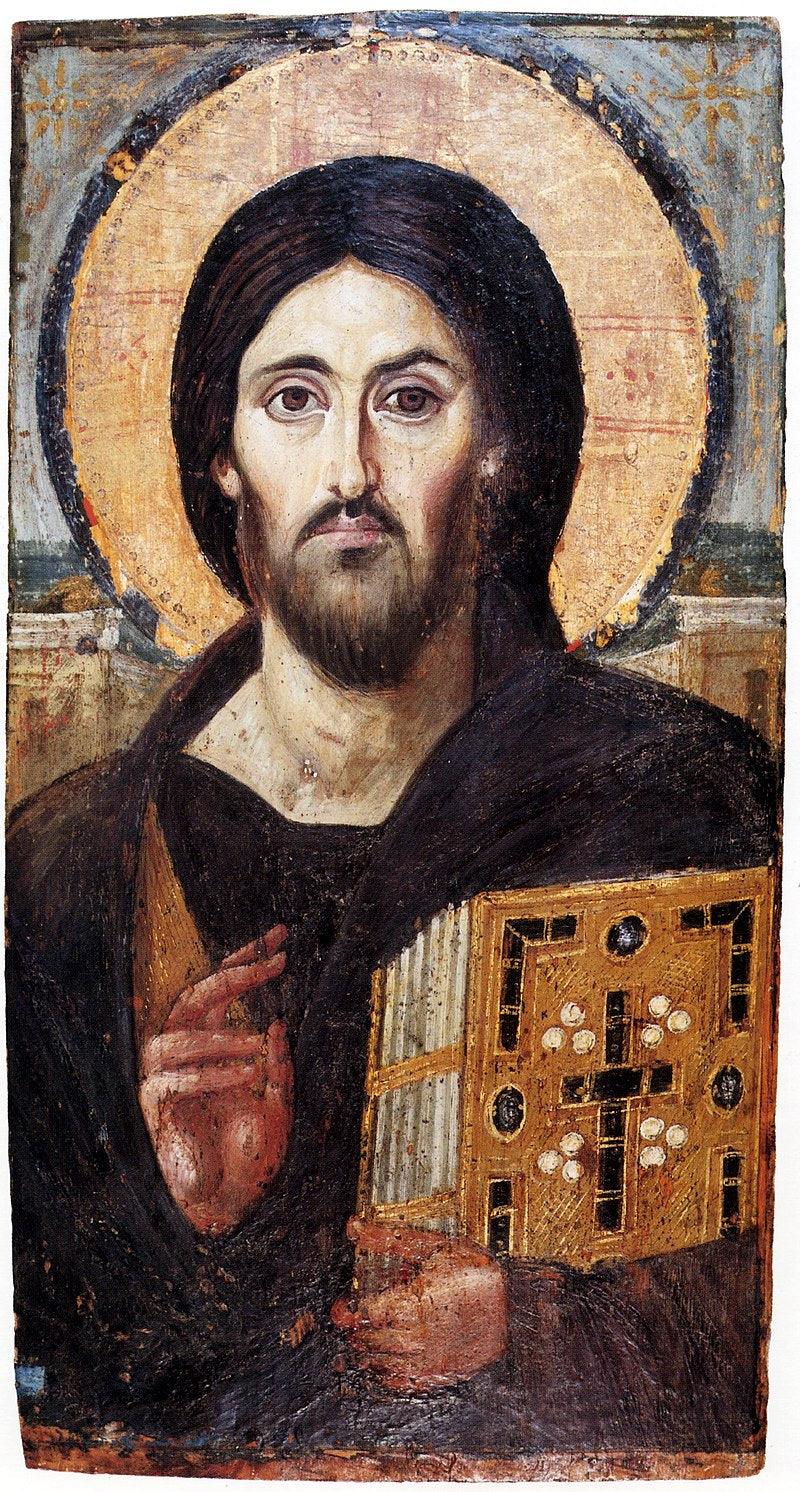
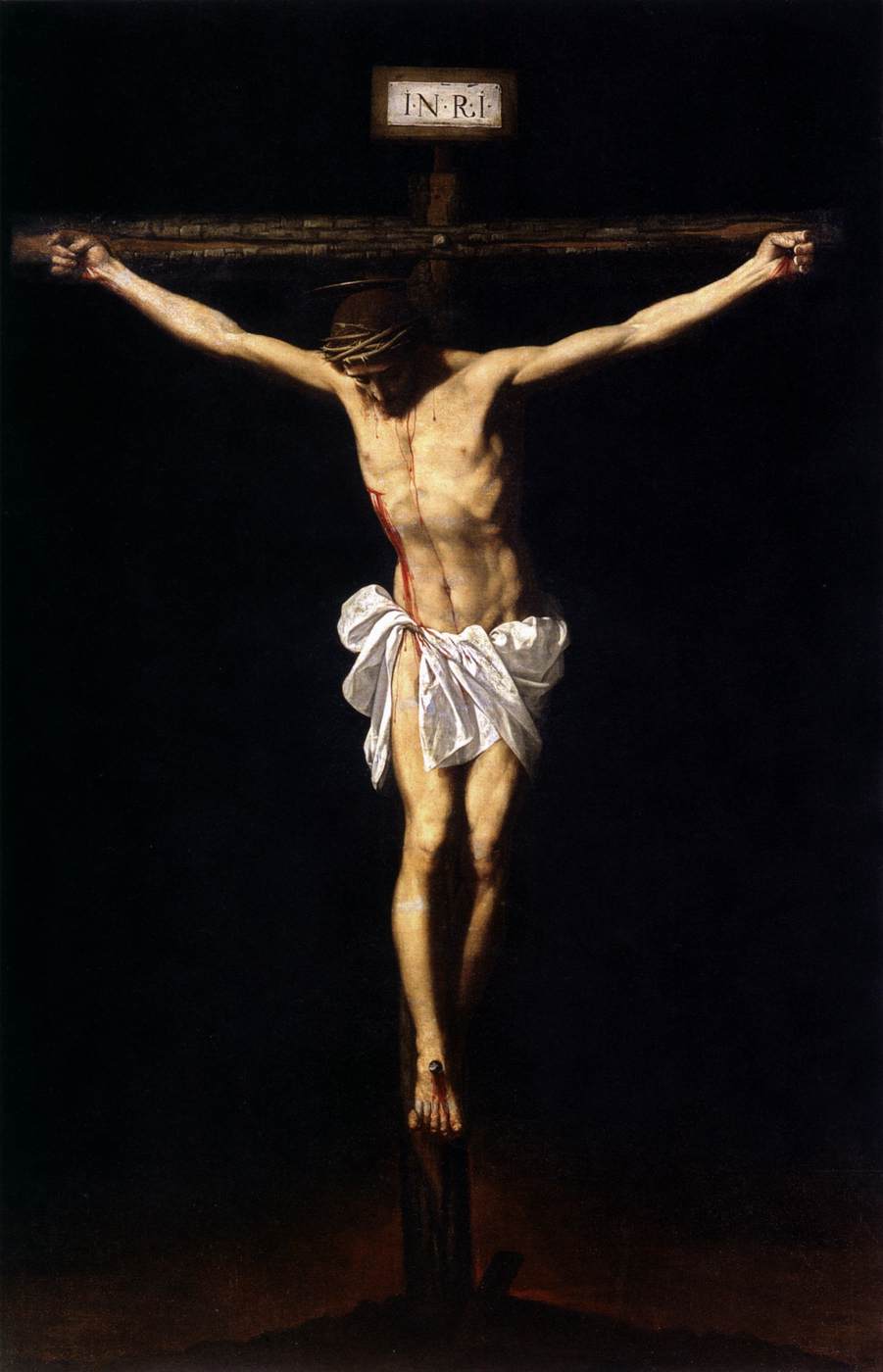
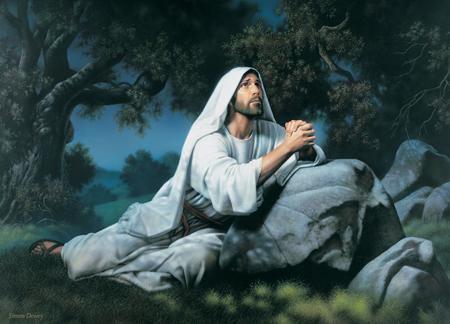
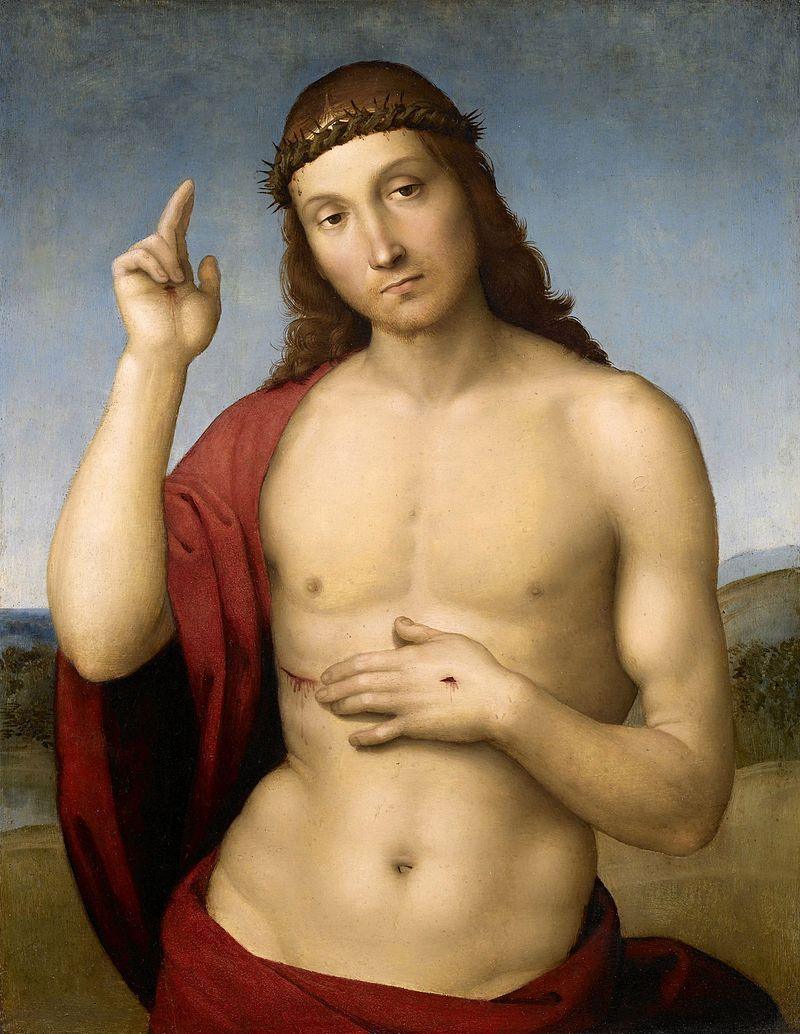
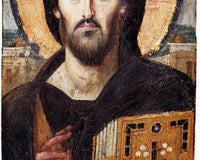
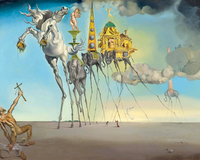
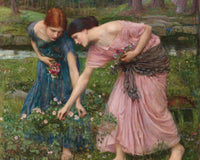

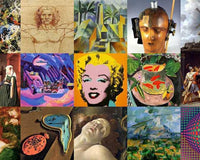
1 comment
Rafael Estrella Lopez
Vi una reproducción de esta obra de Dalí en el Museo de Filadelfia